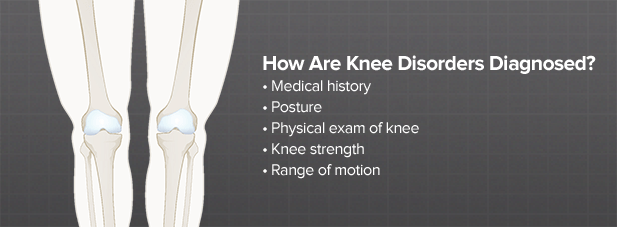
The diagnosis of knee pain usually begins with a complete medical history and physical examination by a doctor as knee pain causes can vary: Swollen knees, water on the knee, pain behind the knee, knee joint pain, knee sprain, knock knees and knee injury can cause an incredible amount of pain and should not be ignored.
A medical history is established when your physician gathers information about your general state of health and the extent of your knee pain and its impact on your everyday activities. Your orthopedic doctor will also investigate hereditary cases of knee arthritis, osteoarthritis of the knee, knee pain and other knee problems. Non hereditary problems include: inner knee pain, knee clicking, broken knee caps, torn ligaments in the knee, knee pain from running and torn cartilage in the knee. There are some exercises for knee pain that can help but your physical examination will be able to determine that. They will also look out for common knee injuries.
Your physical checkup typically includes examination of standing posture, walk or gait, and sitting and laying positions. This helps to confirm or rule out potential diagnoses. Your physician examines the knee for swelling, reddening, bruising, and breaks in the skin. Also, your posture and knee alignment, including whether you are bow-legged or knock-kneed, are assessed. Your physician will also check the strength and tightness of your tendons and ligaments, for any swelling behind the knee, and your knee’s range of motion is measured.
Usually, your diagnosis is primarily based on an X-ray that determines the location and the extent of the bone and cartilage damage. Your doctor may also order one or more specialized tests, depending on the known or suspected causes of the pain. Lab results, ultrasound, CT or MR imaging may also contribute to the diagnosis. Diagnosis can also be undertaken through an arthroscopy.